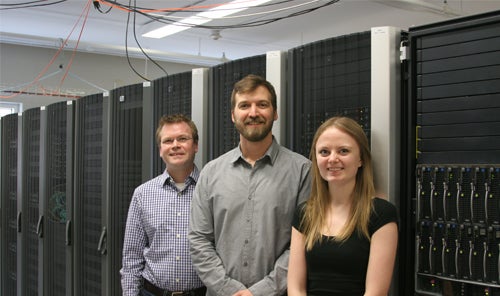
Bringing up the heat on superconductors
A new theory could bring society closer to the next generation of smart grids and medical devices, according to research published in the prestigious journal Science

A new theory could bring society closer to the next generation of smart grids and medical devices, according to research published in the prestigious journal Science
Physicists are one step closer to developing the world’s first room-temperature superconductor thanks to a new theory from the University of Waterloo, Harvard University and the Perimeter Institute.
The theory explains the transition phase - known as the pseudogap phase - to superconductivity. It’s one of the last obstacles to developing the next generation of superconductors and one of the major unsolved problems of theoretical condensed matter physics.
Their work was published in the prestigious journal Science.
Superconductive materials need to be ultra-cooled
Superconductivity is the phenomenon where electricity flows with no resistance and no energy loss. Most materials need to be cooled to ultra-low temperatures with liquid helium in order to achieve a superconductive state.
The team includes Professor Roger Melko, Professor David Hawthorn and doctoral student Lauren Hayward from Waterloo’s Physics and Astronomy Department, and Harvard Physics Professor Subir Sachev. Roger Melko also holds a Canada Research Chair in Computational Quantum Many-Body Physics.

David Hawthorn, Prof. Roger Melko, and Lauren Hayward pictured in front of Waterloo’s SHARCNET supercomputer which is used to perform the calculations.
“This amazing scientific collaboration actually came about by chance over lunch at the Perimeter Institute between Subir and myself,” said Hawthorn.
Hawthorn showed Sachdev his latest experimental data on a superconducting material made of Copper and the elements Yttrium and Barium. The material, YBa2Cu3O6+x, had an unexplained temperature dependence. Sachdev had a theory but needed expert help with the complex set of calculations to prove it. That’s where Melko and Hayward stepped in and developed the computer code to solve Sachdev’s equations.
Synergy between University of Waterloo and Perimeter Institute
Melko and Sachdev already knew each other through Perimeter Institute, where Melko is an associate faculty member and Sachdev is a Distinguished Research Visiting Chair.
“The results all came together in a matter of weeks,” said Melko. “It really speaks to the synergy we have between Waterloo and Perimeter Institute.”
To understand why room-temperature superconductivity has remained so elusive, physicists have turned their sights to the phase that occurs just before superconductivity takes over: the “pseudogap” phase.
“Understanding the pseudogap is as important as understanding superconductivity itself,” said Melko. The group plans to extend their work both theoretically and experimentally.
Superconducting magnets are currently used in MRI machines and complex particle accelerators, but the cost of cooling materials using Helium makes them very expensive. Materials that achieve superconductivity at a higher temperature could unlock the technology for new smart power grids and advanced power storage units.

Read more
The awarded proposal seeks to understand and mitigate the loss of quantum information

Read more
Scientists recreate properties of light in neutral fundamental particles called neutrons

Read more
A new imaging technique using quantum science may lead to novel drug therapies and treatment options, a recent study has found.
The University of Waterloo acknowledges that much of our work takes place on the traditional territory of the Neutral, Anishinaabeg, and Haudenosaunee peoples. Our main campus is situated on the Haldimand Tract, the land granted to the Six Nations that includes six miles on each side of the Grand River. Our active work toward reconciliation takes place across our campuses through research, learning, teaching, and community building, and is co-ordinated within the Office of Indigenous Relations.